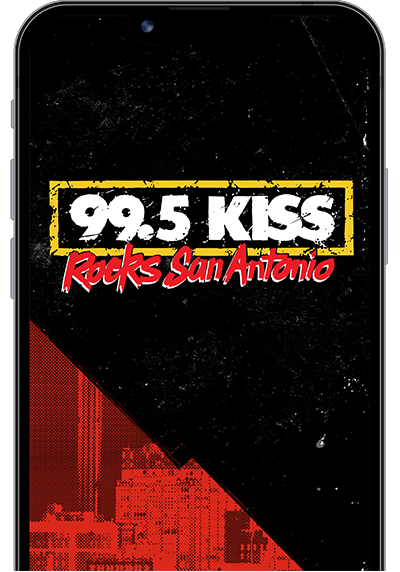Creating a healthy grocery list for weight loss can feel a bit overwhelming, especially if you're just getting started on your weight loss journey. But it's simpler than you think—all healthy shopping lists start with a plan.
Hers has compiled a comprehensive grocery list for weight loss, approved by Dr. Craig Primack, a physician specializing in obesity medicine and the SVP of weight loss at Hers, to make your weight loss journey feel more manageable.
You'll be navigating the grocery store like a pro in no time.
Top 3 Planning Tips for a Healthy Grocery List
One of the best ways to make grocery shopping feel like a breeze? The secret ingredient, if you will, is in the prep work—a little effort before you hit the store will help you stay on track with your weight loss goals and make shopping easier.
So, before Hers dives into its grocery list of foods to eat when trying to lose weight, here are some simple tips to get you ready.
1. Think About Meal-Planning
Take a few minutes to map out your meals for the week ahead. Knowing exactly what you need for each meal will help you stay organized and focused—no matter how hectic the grocery store is.
The more you prepare, the easier it is to stick to your healthy eating goals. Once you've figured out the meals you want to make, creating a shopping list based on your needs is no problem.
Need more tips on turning meal planning into a habit? Check out the Hers guide to meal-prepping for all the details.
2. Scan Your Kitchen First
Take a quick inventory of what's already in your pantry and fridge so you don't double up on anything, especially perishables. This can help you avoid waste, stick to your budget, and go in with a clearer sense of what you need.
Don't forget to check expiration dates and perishable items while you're at it. There's nothing worse than realizing the lettuce went bad right after you made your weekly market run.
3. Go at the Right Time
Grocery shopping while hungry may not be the best idea. It can lead to more impulse buys and make it harder to stick to healthy choices. If you notice yourself doing this, it might be worth picking a different time to shop.
Another reason to choose a good time to go grocery shopping? Avoiding crowds and sold-out favorites. If you know your store gets crowded or runs low on certain items, planning accordingly can make your shopping trip smoother.
Grocery List for Healthy Eating and Weight Loss
Now, let's get into the practical stuff.
A healthy shopping list emphasizes whole foods packed with macronutrients like protein, fiber, healthy fats, and unprocessed carbohydrates. You'll also want to prioritize micronutrients (aka essential vitamins and minerals).
This will help you fuel your body while keeping your weight loss goals in mind.
Ready to dive in? Keep scrolling to see all the best healthy foods for weight loss, aisle by aisle.
Produce Section
This is usually the first section you'll see when you walk into the store. It's a great place to get started with your healthy grocery list. It's where you'll find all your fresh fruits, vegetables, and herbs—non-negotiable items for a nutrient-packed diet. This is a great section to get started in, because you'll start filling up your cart before moving on to less healthy grocery aisles.
Fresh Fruits
When choosing which fruits to add to your cart, prioritize those with lots of fiber and low sugar. These can help keep you fuller longer without spiking your blood sugar.
Here are some go-to fruits to consider adding to your cart:
- Berries are a great source of antioxidants. They're also packed with fiber, which helps support weight management. Blueberries, raspberries, and strawberries are all great options and tend to be lower in sugar.
- Citrus fruits are packed with vitamin C, which supports a healthy immune system. Use lemons and limes to boost flavor and tangerines to satisfy a sweet tooth.
- Melons like cantaloupe and honeydew are super hydrating and have a good mix of vitamins and minerals.
- Pome fruits, like apples and pears, are also packed with antioxidants and vitamin C.
- Avocados contain heart-healthy fats that can help fill you up, but they tend to be high in calories, so portion control is key.
- Bananas are rich in potassium and support digestive and heart health, but they have more sugar than other items on this list.
Vegetables
Fresh veggies play an important role in any diet plan. Veggies are packed with vitamins and essential nutrients. They're also chock full of fiber and heart-healthy antioxidants. Meaning you get a ton of nutritional bang for your buck.
The best part about veggies? They tend to have fewer calories than other food groups. This means you can eat more of them and still maintain a calorie deficit. Whether you're adding a side salad to your protein-packed dinner or making vegetables the highlight of your meals, you can't really go wrong here.
Look for fiber-rich vegetables like:
- Leafy greens (arugula, kale, romaine, collard greens)
- Root vegetables (carrots, turnips, beets, radishes, jicama)
- Broccoli and cauliflower
- Artichokes
- Brussels sprouts
- Cabbage
- Sweet potatoes
- Squash
Bulb vegetables are another item to add to your list. These contain sulfur compounds that boost immunity and heart health. They may also help promote weight loss. Examples include:
- Onions
- Shallots
- Scallions
- Garlic
You can also pick up fresh herbs to enhance the flavor of your meals. This will help you cut down on less healthy flavor enhancers like sugar, condiments, and oils. Consider how these classics might add a little flair to your meal:
- Chives
- Rosemary
- Thyme
- Basil
- Mint
- Sage
- Dill
Meat and Seafood Department
The meat and seafood section is usually situated in the back of the store. If you're an omnivore, it's where you'll go to stock up on protein.
Protein is the most important macronutrient in any weight loss diet plan. It helps you feel full longer than other foods, which means it can help you snack less between meals. It's also easy on blood sugar levels.
Dr. Primack recommends eating at least 100 grams of protein per day if you're trying to lose weight. Protein, he explains, helps you maintain lean muscle mass while you're losing weight. It also helps you build muscle, so you get more out of your strength-training workouts.
He tells patients to look for lean sources of protein to avoid the excess fat and calories that come with fattier cuts.
Lean proteins to add to your shopping list include:
- Chicken
- Turkey
- Lean cuts of beef
- Pork loin
- Shellfish
- Salmon
- White fish (like cod, halibut, seabass, and sole)
- Tuna
Looking for more personalized protein recommendations? This protein calculator can help you find out how much you should eat per day and per meal.
Refrigerated Foods
The refrigerated section is where you'll find dairy items, plant-based products, and protein-rich foods like eggs.
Eggs are an excellent source of protein. Remember, eggs aren't limited to breakfast. Make your own hard-boiled eggs or egg bites to eat as snacks during the day, or buy prepared versions if you're looking for convenience. Of course, eggs should be consumed in moderation, especially if you're watching your cholesterol.
Look for:
- Eggs
- Egg whites
- Vegan egg substitutes
- Egg bites
- Hard-boiled eggs
In the dairy section, you'll find a variety of products that can help up your protein intake. Look for reduced-fat dairy products that will help keep your calorie intake down. But watch out for products, like flavored yogurts, that contain added sugars and carbs.
Look for products like:
- Low-fat Greek yogurt (which is higher in protein than regular yogurt)
- Low-fat cottage cheese
- Low-fat milk
- Low-fat cheeses
And while lean meats are good sources of protein, plant-based options can help you meet your protein needs, too.
For plant-based alternatives, look for:
- Nut milk, like almond milk, oat milk, and coconut milk. Opt for unsweetened options to avoid added sugar and extra calories.
- Tofu, a soy-based protein source that's low-calorie and versatile.
- Tempeh, which is also soy-based but slightly higher in calories than tofu.
- Hummus, a chickpea-based spread that contains both fiber and protein.
Grains and Dry Goods
You'll find these aisles after you leave the produce section. It's where you can find items like whole grains, nuts, seeds, and legumes.
Many of these foods are loaded with protein and fiber, which can help keep you full longer. But keep in mind that some of these foods, especially nuts and seeds, are high in fat calories, which means portion control is essential.
Whole Grains
Whole grains are what's known as complex carbs—carbohydrates that take longer to digest and provide more sustained energy. They tend to be higher in fiber than simple carbs like white bread and pasta. They are also lower on the glycemic index, which means they're more blood sugar-friendly than other carbs.
Consider:
- Quinoa
- Brown rice
- Whole-wheat cereals
- Low-sugar granola
- Farro
- Barley
- Whole grain flour
- Whole grain breadcrumbs
Nuts and seeds make great additions to smoothies, salads, and even soups. They can also make great snacks, but be careful if you're prone to overeating. While nuts and seeds contain protein and healthy fats, they also have a lot of calories.
If you're watching your blood pressure, opt for unsalted versions.
Fan favorites include:
- Walnuts
- Cashews
- Pistachios
- Peanuts
- Almonds
- Pine nuts
- Pumpkin seeds (pepitas)
- Chia seeds
- Sunflower seeds
- Dry lentils
Pantry Staples
The pantry staples are typically located in a store's center aisles. They're often grouped together in sections like canned goods, oil and vinegar, and snacks.
Many of the items in this aisle—like canned beans, nut butter, and olive oil—can be great sources of healthy fats and protein.
Just be sure to scan the serving size info on the nutrition labels, as some of these items can be high in calories.
Look for pantry staples like:
- Salad Dressing. Look for light options containing heart-healthy oils, and watch out for added sugars.
- Vinegar. Make your own salad dressing with balsamic, red wine, white wine, or apple cider vinegar.
- Oil. To support weight management and heart health, skip the butter and choose nontropical vegetable oils like olive oil, canola oil, avocado oil, or grapeseed oil.
- Canned beans. These are affordable and super easy to add to a variety of meals. For a great source of fiber and protein, consider canned black beans, kidney beans, pinto beans, or chickpeas.
- Nut butter. An excellent protein-rich snack, almond butter and peanut butter are two great options with similar nutrient profiles. Look for minimally processed options without added sugars. If you're looking for a nut-free option, check out sunflower seed butter.
- Cooking supplies: Protein powder, cacao nibs, almond flour, whole grain flour, applesauce, and alternative sweeteners may make good substitutes for traditional staples.
Don't forget to stock your kitchen with seasonings and spices to enhance flavor without extra calories or sugar. This is where the magic happens for your taste buds—the spice of life, if you will.
Some common spices used to spruce up recipes:
- Cinnamon
- Cumin
- Coriander
- Red chilli flakes
- Garlic, ginger, and onion powders
- Paprika
- Rainbow, black, or pink peppercorns
- Fennel seeds
- Bay leaves
Some spices have functional benefits, such as anti-inflammatory or antioxidant properties. For example, cinnamon has been linked with blood sugar management. But most recipes use them in such small amounts that their impact is minimal.
Frozen Foods
Last but not least, you can also find some goodies in the frozen foods aisle.
Usually located in the back or near the refrigerated section, this is where you'll pick up nutritious essentials that won't spoil as quickly (which can save you time and money).
Frozen fruits and veggies are more or less nutritionally equivalent to fresh produce. Because they're frozen at peak-ripeness, they maintain most of their nutrients, vitamins, and fiber.
Use frozen fruit to make delicious smoothies or defrost them to add to yogurt or granola. Use frozen veggies in your favorite recipes or steam them in the microwave.
Look out for:
- Frozen fruits with no added sugars
- Frozen veggies (look for microwavable bags if you want to steam them)
- Frozen Greek yogurt
Foods to Avoid
While it can vary depending on the layout of your grocery store, the snack, baking, and sometimes the frozen food aisles tend to be the hotspots for less-than-healthy options.
Knowing how to read a nutrition label can make navigating the supermarket much easier. Be wary of items that are:
- Heavily processed. Look for short ingredient lists with whole foods you recognize. Avoid ultra-processed items (drinks included) with additives, artificial flavors, or hydrogenated oils.
- Packed with preservatives. Some preservatives are harmless, but limit those like sodium nitrite, BHA, and BHT, which have been linked to health concerns. Opt for fresh or minimally processed foods.
- Loaded with added sugars or saturated fats. Check the label for hidden sugars (like high-fructose corn syrup, cane syrup, or dextrose) and try to limit items with high levels of saturated fat. When in doubt, choose unsweetened or lower-fat options when you see them on the shelf.
These foods can be tempting, but they can impact your overall health and lead to weight gain and obesity over time.
Meal Ideas for Weight Loss
Maybe you're looking for inspiration before you hit the store or need thought-starters now that your shopping cart is full. In any case, here are some delicious and nutritious meal ideas to help you use your ingredients wisely.
Breakfast Ideas
- Scrambled eggs with sautéed vegetables and whole-wheat toast
- Greek yogurt topped with fresh fruit and unsweetened granola
- Protein-packed smoothie with greens, fruits, and seeds
Breakfast Recipes
Lunch
- Fresh salad with lean protein like grilled chicken or tofu
- Grain bowl with quinoa, veggies, and a drizzle of olive oil
- Whole-wheat wrap with lean protein, veggies, and a spread of hummus
- Meal-replacement shake
- Vegetable-packed soup or stew with beans or lentils
Lunch Recipes
Snacks
- Brown rice crackers with avocado or nut butter and a side of fruit
- Fresh raw veggies with a side of hummus or avocado
- A handful of mixed nuts with dried fruit
- Healthy protein bar
Snack Recipes
Dinner
- Oven-roasted or sautéed vegetables as a side dish and grilled lean protein like chicken, salmon, or tempeh
- Whole-grain sides like quinoa, brown rice, or farro
- Protein-packed salads with greens, beans, and a light vinaigrette
- Grain bowls with roasted vegetables and lean protein
- Lettuce wraps with lean ground turkey, chicken, or tofu
Dinner Recipes
Dessert
- Low-calorie Greek yogurt or soy-based "ice cream" bars for a quick treat
- High-quality dark chocolate paired with fresh fruit
- Frozen banana slices dipped in nut butter or sprinkled with cacao nibs
Dessert Recipes:
- Protein mug cake
- Frozen Greek yogurt bark
- Brookies (a healthy cookie-brownie hybrid)
Other Ways to Support Weight Loss
Stocking up on healthy groceries and focusing on nutrition is key to weight management. That said, here are other critical lifestyle habits that can help support your healthy eating efforts:
- Exercising regularly. Research shows that combining both cardio and strength training is often more effective for weight loss than relying on just one type of exercise.
- Drinking plenty of water. Staying hydrated is essential for weight loss, as drinking water can help you feel fuller and reduce the urge to snack. Plus, replacing sugary sodas, fruit juices, and alcoholic beverages (which are high in empty calories) can make a big difference.
- Getting enough sleep. Sleep plays a vital role in maintaining a healthy weight. Aim for seven to nine hours of restful shut-eye each night, as insufficient sleep can disrupt metabolism and increase cravings for unhealthy foods.
For some people, lifestyle changes alone might not be enough.
If you've struggled with weight loss despite your best efforts with diet and exercise, weight loss medications like GLP-1s (glucagon-like peptide-1 receptor agonists) may be worth exploring. These can be especially helpful if you have a medical condition that makes weight loss more challenging.
Healthy Grocery List for Weight Loss: The Bottom Line
A well-planned grocery list can give you the nutrients and energy you need to stay on track throughout the week. Here are a few key tips to keep in mind when compiling a grocery list for weight loss:
- Pre-shop preparation. Meal-plan beforehand, take stock of what you already have and avoid shopping while hungry to make better decisions at the grocery store.
- Focus on nutrient-dense foods. Choose high-protein items, fresh fruits, vegetables, whole grains, and minimally processed ingredients to fuel your body and stay satisfied.
- Stay mindful while you shop. Stick to your list, avoid impulse buys, and choose foods that align with your weight loss goals.
- Consider other lifestyle changes. While shopping smart is important, don't forget to consider other key lifestyle habits that support weight loss, like exercising, staying hydrated, and prioritizing sleep.









